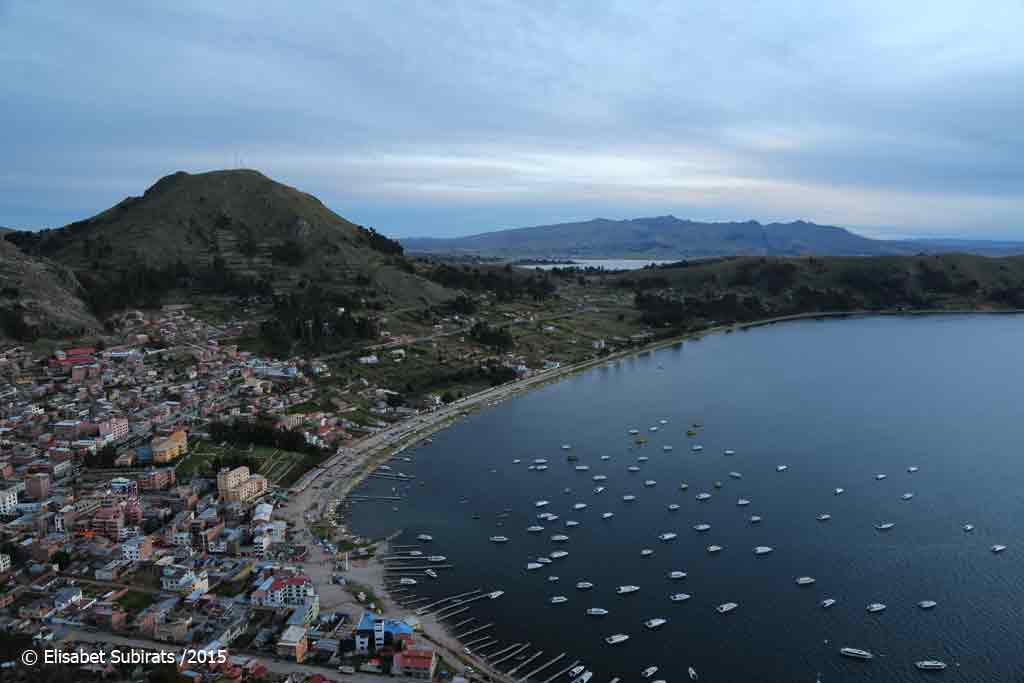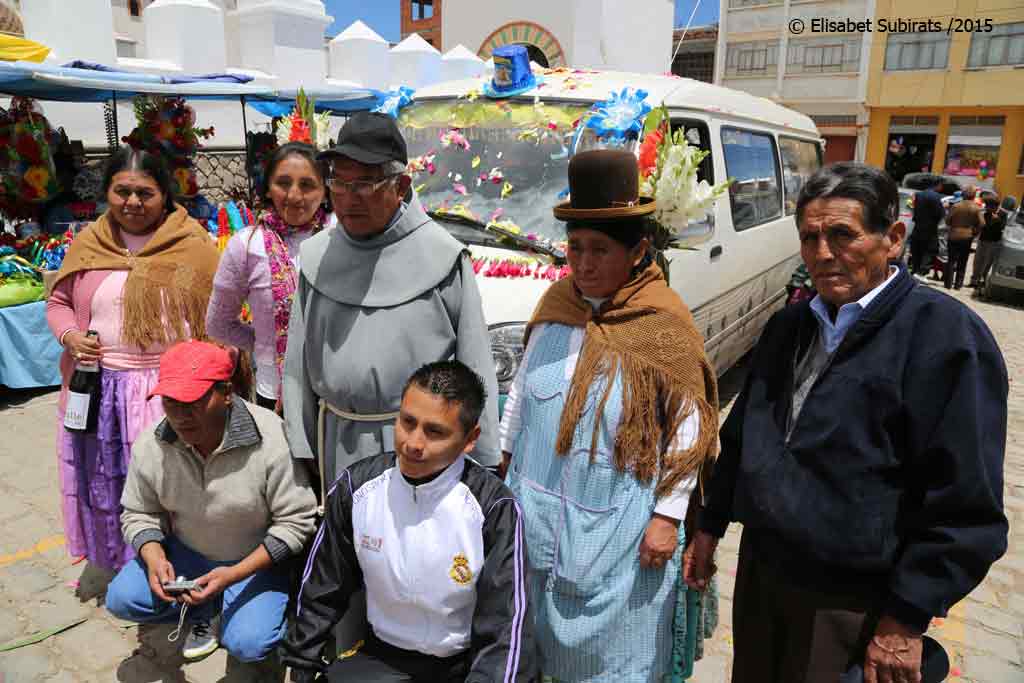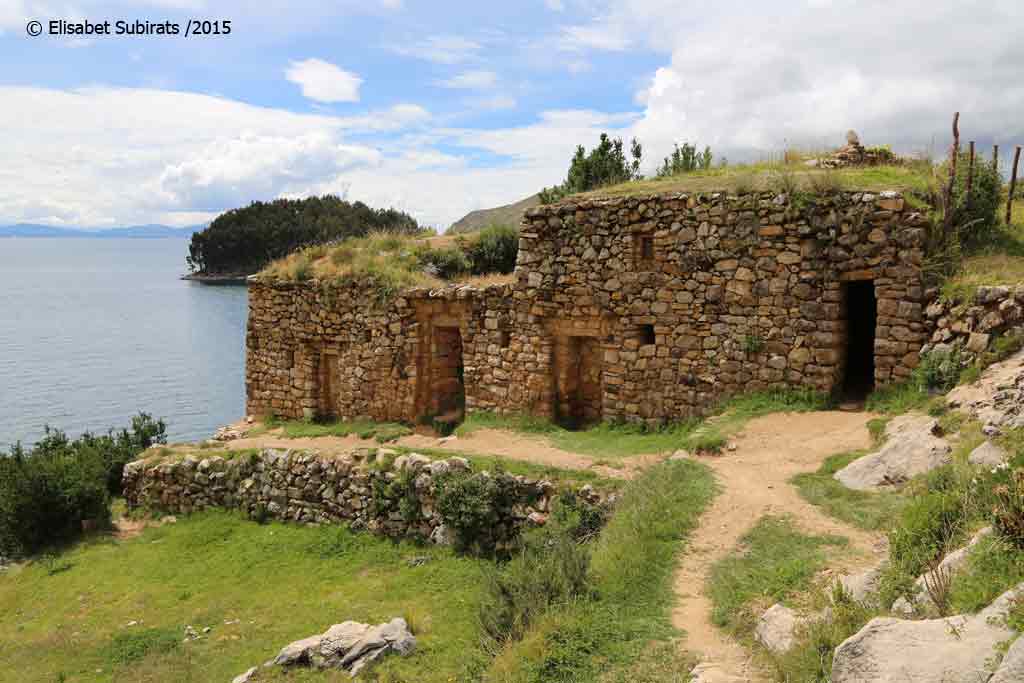The turquoise waters of Titicaca Lake are a magnet as powerful as the Andes or el Altiplano. Colorful people living on floating islands, ancient local customs and some off the beaten path remains are a delight for photographers and show another side of Perú and Bolivia as interesting as its colonial cities or its main archaeological sites. But a visit of the highest navigable lake in the world cannot be completed without its islands, especially Isla del Sol: on this quiet island, many many years before Macchu Pichu or Sacred Valley, the largest empire in America was born, the Inca Empire.
Is it not attractive enough for a exploration walk?

Lake Titicaca (8.560 m2) is the largest navigable lake in South America, located on the border of Peru (60% of the surface) and Bolivia (40%) and with a surface elevation of 3.812 m. Its name, titi – caca, means “stone puma” in Aymara.
In 2005 I visited both sides of Lake Titicaca and this time I did not mind to spend some relaxing days in the Bolivian side, in the town of Copacabana. I booked a room in the same hostel than 10 years ago with a small balcony with views over the lake.
Copacabana is not the most exciting place in the world but it is a cool place, a little bit hippie, to stay for a while. Its main sight is the Basilica of Our Lady of Copacabana, a big pilgrimage centre for Bolivians. And of course, there is the Titicaca shore with its little boats and food stalls, a place I must say that, despite the new pedalow-ducks, it has not lost its authenticity since my last visit.

The best view over Copacabana is from Monte Calvario, a little hike that I recommend especially at sunset. Apart from this I spent my time in Copacabana wandering along its two main streets, its little but colorful market and the Titicaca beach.

On weekends Copacabana looks much more lively thanks to the “cars blessing”. People from all the country come to the Basilica with their tuned cars for the occasion and for many it is a very special and moving event. After the blessing (first with with holy water and later when the priest is gone, with beer ha haa) people go to the beach to eat in the food stalls.

On Sunday I took a boat (2hrs, 25 pesos) to visit Isla del Sol, the place where mythical Manco Pacac, the first Inka, is said to have born. I spent one day and one night there basically hiking. The main hike which crosses the island (Ruta Sagrada de la Eternidad del Sol, 3 to 4 hours) is very nice, with amazing views over the lake and with inca ruins spread here and there. The hike’s highest point is Cerro Chequesani at 4.075 m so it is not an easy hike if you are not used to the high altitude.



After the hike, in the evening, I enjoyed a fresh truchita in one of the few restaurants of Challa Pampa, directly from the lake to my plate so good! The few hostels in Challa Pampa are very basic but cheap (25 bolivianos), more than ok for one night.
Back to Copacabana, I spent one more night there before crossing the border to Peru
The most beautiful night . . .
During my first night in Copacabana, in 2005, and after a nice dinner in La Cupula restaurant, someone asked me to close my eyes and took me from the restaurant to the shore lake. I did not know the purpose of “that game” but when I was allowed to open my eyes again I saw the most beautiful night show: Titicaca Lake’s night sky was a dazzling dome of stars, an incredible show of thousand stars. I had never seen something like this before . .
Look for the Cruz del Sur (Southern Cross): it is the constellation used in the Southern Hemisphere to get easily oriented.
My Tips :
- Hotel La Cupula is a little bit expensive for Bolivia standards (15$ single room) but it is the perfect place for some relaxing days by the lake;
- I suggest you to do the hike from North to South. The northern communities are better organized and the path from there is easy to find and well marked. This time I started from the South and I got lost, lol
-
Don’t miss a grilled truchita with lemon, the best of Titicaca Lake!
Disclaimer: This post includes affiliate links, meaning I get a small commission if you make a purchase through our links. It costs you nothing more (in fact, if anything, you’ll get a nice discount) but helps me to go on creating incredible Barcelona content for you. I trust all products promoted here and would never recommend a product that isn’t of value.
World Trip Planner is a participant in the Amazon Services LLC Associates Program. As an Amazon Associate, I earn from qualifying purchases at no expense to you.
About WORLD TRIP PLANNER
Quirky explorer with a preference for lesser-known sights, I am continuously looking for new ideas and tips to help you plan your dream World Tour!








